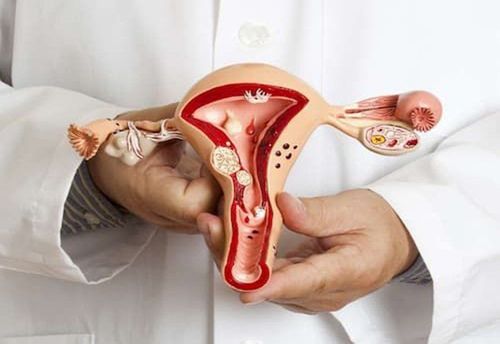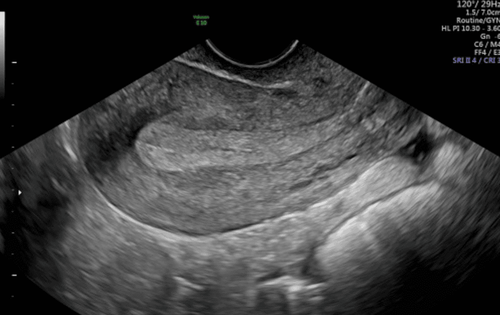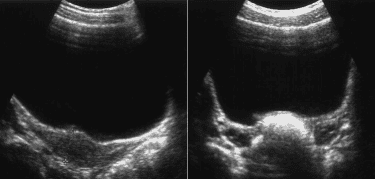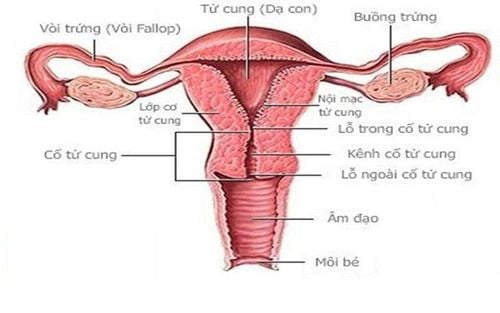This is an automatically translated article.
The article is professionally consulted by Master, Doctor Trinh Thi Phuong Nga - Radiologist - Department of Diagnostic Imaging and Nuclear Medicine - Vinmec Times City International Hospital.Uterine ultrasound - adnexa is an imaging technique to assess the reproductive health, the condition of the uterus, appendages and ovaries on both sides. For women, ultrasound of the uterus - adnexa is a necessary procedure in reproductive examination, especially if abnormal signs of the uterus and appendages are detected.
1. What is the uterus?
The uterus, also known as the womb, is a female reproductive organ shaped like an upside down pear. The uterus is located between the bladder and rectum, including the bottom connected to the fallopian tubes and ovaries, the cervix leading to the vagina.The size of the uterus in an adult is usually 8x5x3cm, and the length of the uterus depends on the body of each person.
The uterus has an extremely important effect in a woman's menstrual cycle and pregnancy. It is related to the amount of blood lost during the menstrual cycle, prepares the environment for conception, is the place to nourish the fetus during pregnancy, helps create a feeling of orgasm during sex. .
2. When does the doctor order an ultrasound of the uterus?
Uterine ultrasound - an appendix is an imaging technique that helps specialists assess the shape and part of a woman's sexual function, survey the thickness of the uterine lining, and help screen some cancers. gynaecological disease.
Siêu âm tử cung giúp tầm soát các bệnh phụ khoa
● Women with abnormal vaginal discharge, gynecological infections, cervicitis, the doctor will order an ultrasound to Determine whether the infection is localized or widespread.
● Women who are about to become pregnant or are pregnant should go for an ultrasound of the uterus to determine the health status of the mother.
● If you have menstrual problems such as amenorrhea, menorrhagia, irregular periods, you should go for an ultrasound of the uterus - an appendix to find out the cause.
● If you are infertile, you should also go for an ultrasound of the uterus - an appendix because it can detect the cause of infertility from the uterus, ovaries or fallopian tubes.
● You should go to the doctor and have an ultrasound of the uterus - the appendix periodically, because this method will help your doctor diagnose the conditions that your uterus is having early.
3. What is the effect of ultrasound of the uterus?
Uterine ultrasound - the appendix has many benefits for women, thanks to the ultrasound results, the doctor can assess the condition of the uterus and appendages to detect abnormalities early and have a plan. The earliest treatment:● Uterine ultrasound – an appendix that helps detect birth defects in the uterus, which is the leading cause of infertility or infertility.
● Help detect the presence or absence of a uterus.
● Know the thickness of the uterine lining.
Polycystic Ovaries
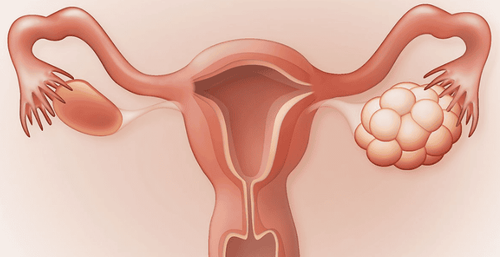
Siêu âm tử cung phần phụ có thể giúp chẩn đoán bệnh buồng trứng đa nang
Ovarian cysts
Uterine fibroids
Helps to observe the development of the ovaries
Assess the thickness of the endometrium
Assess sexual functions other.
4. Uterine adnexal ultrasound methods
Currently, two methods are applied simultaneously to ultrasound of the uterus - the appendix is transabdominal ultrasound and transvaginal transvaginal ultrasound.4.1 Transabdominal Ultrasound To perform this method, the specialist uses the transducer of the ultrasound machine to move over the patient's upper abdomen to clearly see the internal reproductive organs. This is the best method for women who have not had sex.
Before performing the ultrasound, you should hold your urine tight (the bladder is full of water), this will help the image of the entire internal reproductive organs to be revealed and displayed more clearly.
4.2 Transvaginal Ultrasound In this method, the doctor will use an ultrasound transducer device that goes into the vagina to examine. This method is not suitable for people who have never had sex because it is easy to tear the hymen.

Siêu âm đầu dò âm đạo có thể làm rách màng trinh
The transvaginal ultrasound method has an advantage over the abdominal ultrasound because the transducer directly approaches the uterus - the appendage includes both ovaries, so it is easy to detect ovarian tumors, purulent inflammation or fluid retention. Fallopian tubes, uterus shape, uterine cavity, help evaluate the best position to put the IUD if you want to plan a family.
5. Notes before conducting an ultrasound of the uterus and appendages
For the method of ultrasound on the abdominal wall, there are not many strict conditions and almost anyone can perform this method, just need to coordinate with holding urine. The transvaginal ultrasound method has some caveats as follows:● Do not use if you have a pelvic infection. Take it easy when you are pregnant or suspect that you are pregnant.
● Check if the examiner is allergic to latex
● The ultrasound should not be performed during menstruation because menstrual blood may blur the ultrasound image.
● If you have never had sex, you should consider using this method because it may tear the hymen.
● If you have abnormal bleeding or menorrhagia, your doctor will prescribe hemostatic medication before performing the ultrasound.

Không nên tiến hành siêu âm tử cung phần phụ vào ngày có kinh nguyệt
6. Possible risks during and after an ultrasound of the uterus - appendages
Most of the time, after the ultrasound is done, you can return to your normal activities. However, some cases will develop symptoms such as: Cramping, vaginal discharge, blood spots or light bleeding. You should go to reputable medical centers, hospitals or quality clinics to do ultrasound to avoid unnecessary risks.In fact, if you go home after an ultrasound with symptoms such as: Pain, fever, abnormal vaginal discharge and an unpleasant odor, you should immediately go to the nearest hospital or medical center for examination. .
Doctor Trinh Thi Phuong Nga is a radiologist with nearly 20 years of experience in diagnostic imaging. Currently, the doctor is working at - Department of Diagnostic Imaging - Vinmec Times City International General Hospital.
Any questions that need to be answered by a specialist doctor as well as customers wishing to be examined and treated at Vinmec International General Hospital, you can contact Vinmec Health System nationwide or register online HERE.
SEE MORE
Uterine ultrasound: When should it be done? The role of gynecological ultrasound in the diagnosis of uterine pathology, appendix What causes pain during sex?





